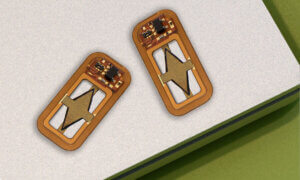A new study from MIT found that, by putting synthetic hydrogels through a good workout, they become stronger and more resistant to fatigue. The polyvinyl alcohol (PVA) hydrogels in question are biomaterials commonly used for medical implants, drug coatings and other similar types of applications.
The researchers didn’t make them to do push-ups or lift weights to prove their point, though; they trained these hydrogels by stretching them in a water bath, which in turn aligned the nanofibers inside them and produced a strong, soft and hydrated material that can resist tears and fatigue even after being put through a lot of stress via repetitive movements.
Associate professor of mechanical engineering at MIT Xuanhe Zhao, alongside graduate student Shaoting Lin, postdoc Ji Liu and graduate student Xunyue Liu, authored a paper published in the Proceedings of the National Academy of Sciences, where they detailed how these hydrogels can be 3D-printed into different shapes and be trained to develop muscle-like properties.
“Most of the tissues in the human body contain about 70 percent water, so if we want to implant a biomaterial in the body, a higher water content is more desirable for many applications in the body,” Zhao explained when asked about one of the obstacles in creating a hydrogel that may be strong but would lack a muscle’s flexibility.
The researchers discovered the benefits of working out the hydrogel more or less by mistake: the team had been performing a number of tests on the hydrogels while trying to find their break down point. Instead, they discovered that their stress tests only made the hydrogels stronger.
“The phenomenon of strengthening in hydrogels after cyclic loading is counterintuitive to the current understanding on fatigue fracture in hydrogels, but shares the similarity with the mechanism of muscle strengthening after training,” Lin said.
During the training process, the team made note of the fact that the nanofibers were aligning themselves in spite of the fact that, before training, those nanofibers were oriented randomly. This alignment is also very similar to what happens with the human muscles as they undergo repeated exercise.
Some hydrogels were stretched over 30,000 times without breaking down, while others developed their properties after about 1,000 stretches. The tensile strength of the trained hydrogel increased by 4.3 times, when compared to the untrained hydrogel. The hydrogel also stayed soft and flexible and maintained a water content of 84%.
In the future, these hydrogels could be used in implants like “heart valves, cartilage replacements, and spinal disks, as well as in engineering applications such as soft robots,” Zhao said.
Follow TechTheLead on Google News to get the news first.


























